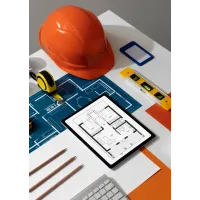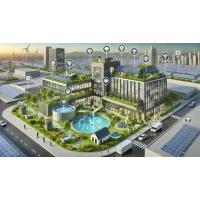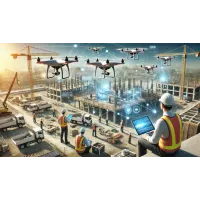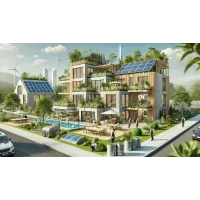3D Printing and Modular Construction
3D Printing technology and modular construction are new and revolutionary approaches that are different from traditional methods in the construction site. These technologies shorten the construction period, provide more efficient use of resources and reduce costs. The structural parts of the buildings with 3D printing are printed in a short time, and the module is in the construction of the factory and combined in the field. These methods minimize the needs of workforce and material, which makes it possible to implement the projects faster and more effectively.
Advantages of 3D printing technology
3D Printing technology provides speed, benefit and accuracy in different stages of the construction process. The structural components and decorative elements of buildings with this technology are produced in a short time and are sent to the field.
Fast construction: Fast production of construction elements with 3D printing technology is possible. Unlike traditional methods, 3D printers formulate the building parts by printing the materials layer. Thanks to this method, houses and buildings are built in a short time. For example, it is possible to build a house in a few days with a 3D printer. This approach is assessed as an ideal solution to meet the needs of rapidly growing housing in large cities.
Affordable construction: 3D printing, minimizes the material waste and only the material is used. In this way, the costs are reduced, because both waste decreases, but also reduces the needs of the workforce. If there is a need for a large number of material waste and workforce in traditional construction processes, the use of 3D printing material is accurate and does not require additional employees. This approach offers a suitable solution for the budget limited projects.
Module Construction
Modular construction is carried out by the construction of different parts of the buildings in advance and deliver the area to the area and combined. This approach increases the execution speed of projects and increases the quality.
Ease of installation: Modular parts are throughout the factory in accordance with standards, and can be installed quickly in the field. The module does not require any additional work in the field because each part in construction is prepared to match the exact dimensions. This shortens the project term and ensures the completion of the work faster and more effectively. Fast installation is being implemented with the combination of modules in the field of construction, which allows projects to be completed at the appointed time or before.
Sustainability and quality: Modular construction parts are prepared by high quality control procedures in the factory. This ensures that construction components are more durable and secure. Each module is reduced in the need for additional quality control in the construction site because the part of the factory passes the quality inspection. This approach ensures that the buildings are long-lived and firm, because the standards are used in full compatible parts.
3D printing and modular construction technologies create new standards in the construction sector and allow faster and modern solutions to the field of urban planning. Thanks to these technologies, buildings are being built rapidly and modern approaches are offered to solve the housing problem in cities. In the future, more innovative and environmentally friendly approaches are expected to develop in the construction industry with a wider distribution of these technologies. With these approaches, the rapidly developing city life and growing needs will be met.


 Catalog
Catalog





